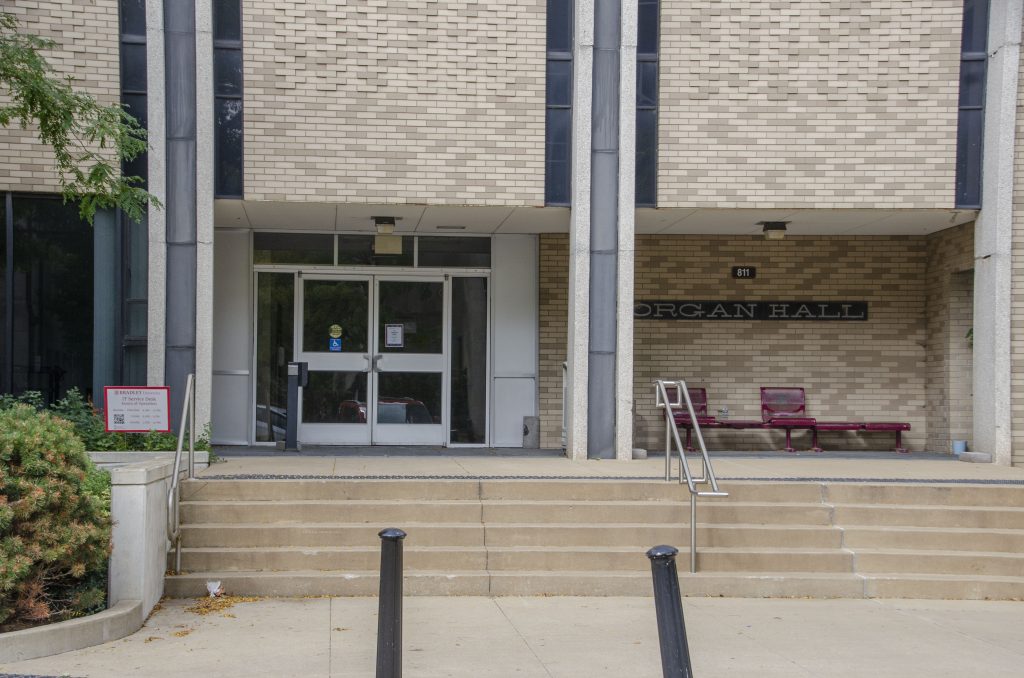Across campus, students and faculty have been noticing a decrease in the strength of their Wi-Fi connections. This has caused increased delays in connecting to Wi-Fi, prompting several complaints.
Students have taken to the anonymous social media app YikYak to express repeated frustration with the technology and Wi-Fi issues on Bradley’s campus.
Shannon Sandoval, a communications professor at Bradley, explained that the Wi-Fi has given her trouble when trying to access class materials on Canvas.
“Just as I’m trying to explain to students something about the importance of keeping things moving in a speech or a video presentation and trying not to have any ‘dead air,’ that’s just when the internet will drop out,” Sandoval said.
Students and professors have noticed that when they move to different areas on campus, the Wi-Fi signal once again begins to falter. If they were once in their residence hall or classroom and moved to a different building across campus, the Wi-Fi would slow down and they would have to reconnect again. It even happens when they move around in the same building.
“Because I’m using a laptop and moving from room to room or floor to floor in the building, it’s not uncommon for the signal to drop as I move around,” Sandoval said. “Sometimes it seems to be a little finicky about getting re-established when I need it to.”
Not only does the internet connection slow down sometimes, it often doesn’t connect at all, which makes it hard for commuter students to get ready for classes.
“[A] majority of the time, [the Wi-Fi] is okay,” Montgomery Wallace, a sophomore television arts major said. “It kind of just depends on what building you’re in or what time of day it is.”
The issues have mostly been found around campus and students often send in tickets to the IT desk about their connection from their dorms.
Rick Sander, who is Bradley’s Director of Networking and Communication Systems, wants students who have noticed the Wi-Fi signal to consider how many students live on campus. He explained that it is common for students to bring three to five wireless technological devices to their rooms. Multiplying that number by the amount of residents per hall creates a strain on the network.
“You’re going to have a ballpark of 15 devices just within a three room area…each one of these devices is contending for connectivity and that connectivity is affected by a lot of things…every time the compressor of your mini fridge comes on it’s creating a certain amount of interference,” Sander said.
He also has noticed that lots of times when students report the Wi-Fi crashing, they either do not include any contact information or don’t respond to the ticket response emails sent by the IT desk.
The resulting miscommunication between the students and the IT department causes students to express their frustration through social media.
Sander understands the frustration coming from students, noting that if the Wi-Fi is crashing and both students and professors are unable to log on then they can’t do their respective jobs, which negatively impacts the overall campus experience.
“If a student cannot connect to the network, then they’re not doing their job as a student,” Sander said. “If an instructor cannot access the network to enrich the mind of the student, then the instructor cannot do his job. Neither the student nor the faculty member can do what they are supposed to be doing because the network is not functioning properly, then I’m not doing my job.”
As the year goes on, students are hoping for the range of Wi-Fi to get stronger and better to help prevent any more issues, along with receiving communication from the IT department regarding the status of the campus Wi-Fi.
“Giving more updates to faculty and students about what they’re doing with the Wi-Fi [is important] so we are more in the loop because I feel like students don’t ever hear anything if it’s already down or something is already messed up,” Wallace said.
And while there are no present solutions, Sander does say that the administration is working to improve the system on campus when the time is right.
“I’m sure that once the technology advances to the point where it has to be replaced, that will be the administration’s top priority,” Sander said.

